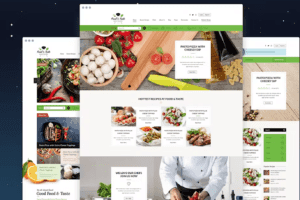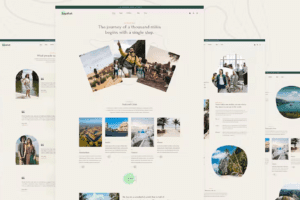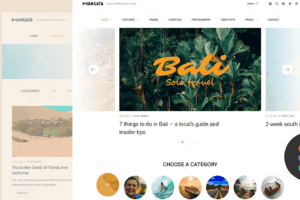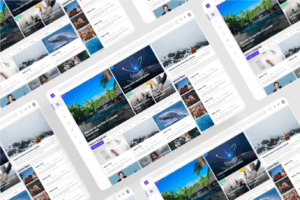How To Create Geo-Targeted Content That Attracts Local Customers

Geo-targeted content is a powerful tool for businesses looking to attract local customers. By tailoring your content to specific geographic locations, you can increase your visibility in local search results and drive more foot traffic to your physical locations. In this guide, we’ll explore strategies for creating effective geo-targeted content that resonates with your local audience and boosts your business’s bottom line. From optimizing your website for local SEO to leveraging location-based social media targeting, we’ll cover everything you need to know to succeed in attracting local customers through geo-targeted content. Key Takeaways: Understand your local audience: Research and understand the demographics, preferences, and needs of your target local audience to create relevant and targeted content. Utilize local keywords: Incorporate local keywords, phrases, and landmarks in your content to improve local search visibility and attract nearby customers. Create local-specific content: Develop content that is tailored to local events, news, or community activities to establish a connection with your local audience and attract more customers. Preparing for Geo-Targeted Content Creation Some 10 Practical Tips For Using Geo-Location To Reach Your Target Audience are necessary before plunging into creating geo-targeted content that attracts local customers. By following these tips, you can ensure your content is optimized for local search and effectively reaches your desired audience. Researching Your Local Audience Researching your local audience is a crucial first step in creating geo-targeted content. Understanding the demographics, interests, and behaviors of your target audience in specific locations can help you tailor your content to meet their needs and preferences. Utilize tools like Google Analytics and social media insights to gather data on your local audience and create buyer personas that represent your ideal customers. When researching your local audience, pay attention to trends, preferences, and popular topics that resonate with them. By gaining insights into what your target audience is looking for, you can create content that is relevant and engaging to them, increasing the likelihood of attracting local customers to your business. Identifying Local Keywords For identifying local keywords, it’s necessary to conduct keyword research specific to your target locations. Use tools like Google Keyword Planner, SEMrush, or Moz to discover relevant keywords that include location-based terms such as city names, neighborhoods, or landmarks. Incorporating these keywords strategically into your content can help improve your search engine rankings for local searches. Audience engagement can also be boosted by including local keywords in your content, as it shows search engines and users that your business is relevant to their specific location. Focus on long-tail keywords that are specific to your local area and industry to attract highly targeted traffic and increase your chances of converting local leads into customers. Creating Geo-Targeted Content Strategy Unlike generic content marketing strategies, creating geo-targeted content requires a more focused approach to attract local customers. By tailoring your content to specific locations, you can effectively reach and engage with your target audience in their local communities. Factors to Consider for Geo-Targeting When crafting geo-targeted content, there are several key factors to consider to ensure the success of your strategy. First, you need to identify the geographic locations you want to target. This could be based on where your target audience is located or where you want to expand your business. Geographic location Cultural differences Local interests and trends The content you create should be tailored to resonate with the local audience by addressing their specific needs, preferences, and interests. Understanding these factors will help you create content that connects with local customers on a more personal level. Tips for Crafting Localized Messages To craft localized messages that resonate with your target audience, it’s important to research and understand the local culture, language, and preferences. By incorporating local references and language, you can make your content more relatable and engaging for local customers. Local language and slang Cultural references Personalized offers Assume that incorporating personalized offers and promotions tailored to the specific needs and interests of local customers can significantly increase engagement and drive conversions. By showing that you understand and value their uniqueness, you can build trust and loyalty among your local audience. Implementing Geo-Targeted Content Despite the increasing competition in the digital landscape, geo-targeting remains a crucial strategy for businesses looking to attract local customers. By tailoring your content to specific locations, you can enhance your brand’s visibility and relevance among local audiences. If you’re new to geo-targeting or need a refresher, check out Geo Targeting: A Powerful Content Marketing Strategy for a comprehensive guide on how to effectively implement this approach. How-to Optimize Content for Local SEO One of the key aspects of geo-targeted content is optimizing it for local SEO. This involves including location-specific keywords, creating content that addresses local issues and interests, and ensuring your business listings are accurate and up-to-date across online directories. By incorporating these strategies, you can improve your chances of appearing in local search results and attracting nearby customers. Another important step is to create location-based landing pages that cater to different regions you serve. These pages should contain relevant information about your products or services in that particular area, along with customer testimonials or case studies from local clients. By providing hyper-localized content, you can establish trust and credibility with potential customers in each location. Engaging Local Customers via Social Media and Local Platforms GeoTargeted content is vital for engaging local customers through social media and other regional platforms. By creating posts and ads that are specifically targeted to users in a particular location, you can increase the likelihood of driving foot traffic to your physical store or generating online conversions. Utilize location-based targeting features on platforms like Facebook, Instagram, and Google My Business to reach your target audience effectively. Plus, encourage local customers to leave reviews and share their experiences on platforms like Yelp, TripAdvisor, and community forums. User-generated content from satisfied customers can significantly boost your credibility and attract new business. Engaging with local influencers and collaborating with other businesses in the area can also help broaden














